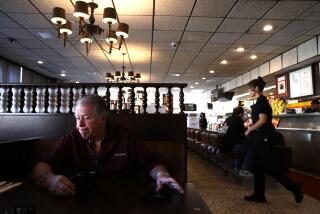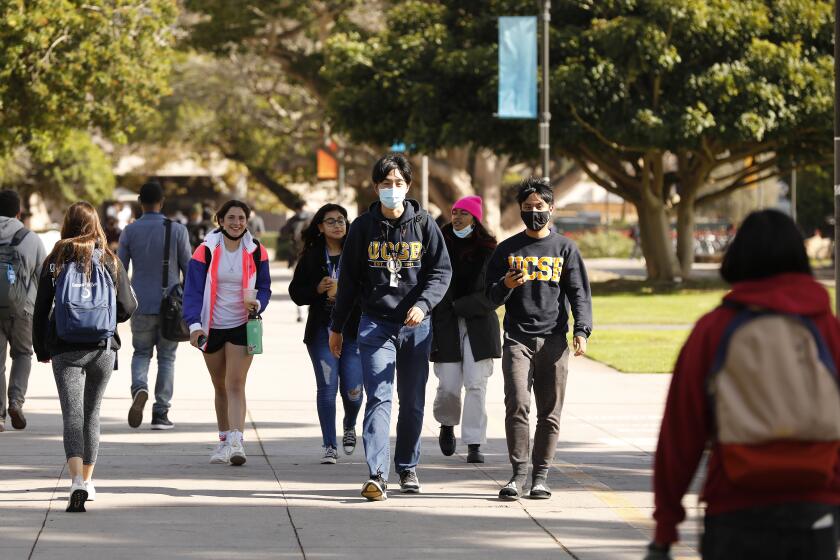Vernon Incinerator Is Shouted Down--for a Month, at Least
Chanting had disrupted the public hearing for 10 minutes before Gloria Molina, a Los Angeles city councilwoman sitting in the audience, took the microphone to ask for calm. The crowd listened politely to Molina, then picked up the chant again.
Finally, exasperated officials from Sacramento and the U.S. Environmental Protection Agency had had enough. “The meeting is canceled for this evening,” announced David Willis, deputy director of the California Department of Health Services.
Cheers followed as more than 300 people poured out into the dark street in front of the civic center in Commerce. They had come from all over the southeast corner of Los Angeles County to protest plans for a hazardous waste incinerator in nearby Vernon--and had succeeded in delaying things at least another month.
Little else riles a community these days like toxic waste, and that is especially true in this section of Los Angeles County. The area already is home to the county’s first public trash incinerator, and most of the trash not burned gets buried in the nearby hills.
The agitation this week was over a proposed private incinerator--already approved by most regulatory agencies--that would burn about 22,000 tons a year of hazardous industrial wastes and infectious “red bag” debris from local hospitals.
Welcomed by city officials in Vernon, it would be the first commercial incinerator in Southern California to burn certain hazardous substances, such as solvents and other industrial liquids.
Those materials are buried now in rural landfills in Central California. But as more water contamination is found in the underground basins beneath landfills, regulatory agencies have begun to lean in favor of burning. The closest working hazardous material incinerator is in Kern County, and legal action is holding up a project in the posh La Jolla section of San Diego County.
In Vernon, the company that wants to build the incinerator, California Thermal Treatment Service, has already secured most of the necessary permits after two years of negotiations.
The agency most closely involved, the South Coast Air Quality Management District, ruled in 1985 that no environmental impact report was necessary. Last February, the AQMD reiterated the decision and accepted the findings of a study that found that the health risk of burning the wastes would be negligible.
Final clearance is still required from the state health department and the EPA, but the two agencies signaled their tentative support in October by issuing a draft permit. It was their public hearing, called to get comment from nearby residents, that was disrupted this week by the unruly crowd.
“This incinerator is one way of reducing toxic waste . . . if it is safely handled and administered,” Willis said after the meeting. “We don’t want to put any more into land disposal.”
As for the forced delay, Willis said simply, “We’ll reschedule the meeting for after the holidays.”
Opponents object most to the AQMD decision to grant permits for the incinerator without requiring an environmental impact study.
The incinerator is planned for a nine-acre site southwest of the interchange between the Santa Ana and Long Beach freeways. Vernon, an industrial city, has only 81 residents, but is home to stockyards, meatpackers and other food-processing plants and is next to residential areas of South-Central and East Los Angeles.
“An (environmental impact report) was needed for the Commerce trash incinerator, the (planned) Raider stadium in Irwindale and even a school in Montebello--but not for a hazardous materials incinerator?” said George Cole, a City Councilman in nearby Bell. “It’s bad business and bad government.”
AQMD officials decided that the circumstances did not require an environmental study under state law. The site has already been used for industrial purposes, such as a steel-fabricating plant. The incinerator itself would be equipped with an array of emission controls to remove acid gases, trap hazardous particles and clean the exhaust.
But the district did require a study on the human health risk from the air emissions that would be carried over nearby areas.
The risk study concluded that the incinerator posed a threat well below the commonly used statistical standard of one cancer death for every million people exposed to emissions over a prolonged time. The findings were accepted by the AQMD, which said the incinerator would have to pass a test burn before it could be operated.
Critics, including several in the state Legislature, have also complained that the incinerator project has moved too quietly through the government agencies that grant permission.
“The public has not been properly notified,” state Assemblywoman Lucille Roybal Allard (D-East Los Angeles) complained this week.
The high turnout at the public hearing this week was due in part to a mailing by Roybal Allard, informing residents of the issue, and in part because Molina helped arrange buses to bring mothers from Boyle Heights.
They were joined by the same unusual mix of activists--from South-Central and more affluent sections of Los Angeles--who took credit for complaining so loudly last year that Los Angeles Mayor Tom Bradley decided to kill plans for the city’s Lancer trash incinerator.
Perhaps the most noticeable group at this week’s meeting were activists from Greenpeace. Some came dressed in chicken suits and death masks, while others held up signs critical of the incinerator and led the chanting.
More to Read
Sign up for Essential California
The most important California stories and recommendations in your inbox every morning.
You may occasionally receive promotional content from the Los Angeles Times.





